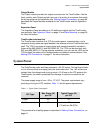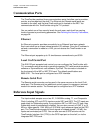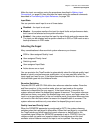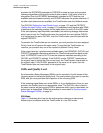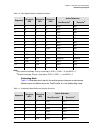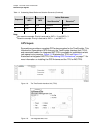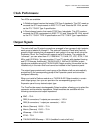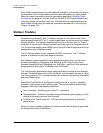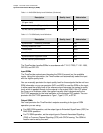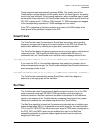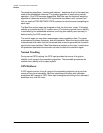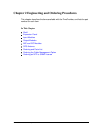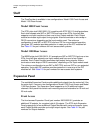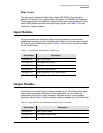
Chapter 1 Overview of the TimeProvider
Retimer Modules
40 TimeProvider User’s Guide 097-58001-02 Revision G – April 2008
Each Output module plugs into a slot labeled A through D on the main shelf and on
the Expansion Panel and provides connectors and terminations for eight outputs.
Make the output connections using the procedures described in Making Output
Connections, on page 66. You can install the TIA/EIA B-422 Output module in any
of the four groups on the Main shelf only. You provision the output signal type for
each Output module using the software commands described in Provisioning the
Outputs, on page 118.
Retimer Modules
Symmetricom provides E1 and T1 Retimer modules for the TimeProvider. Each
module supports two full E1 or T1 circuits (signal types cannot be mixed on a single
Retimer module). The Retimer modules plug into one of the four slots for Output
modules in the main shelf. Retimer modules cannot be used in an Expansion Panel.
The TimeProvider meets system NEBS Level 3 and CE Class B requirements for all
configurations with a Retimer module.
The E1 Retimer module is only available with BNC connectors. The T1 Retimer
module is available only with wire-wrap connections.
Each Retimer module consists of two bi-directional circuits. Side 1 of the circuit
provides Reamplifying, Reshaping, and Retiming, or 3R. Side 2 of the circuit
provides Reamplifying and Reshaping only. Both Side 1 and Side 2 line interfaces
accept signals that are up to 16 dB down from DSX levels.
The TimeProvider generates an alarm when the Retimer exceeds a user-selected
slip rate. The default alarm level is NA (No Alarm), and the default slip rate is 4 slips
in a 24-hour period. A TL1 command allows you to clear the slip counter associated
with each Retimer port.
Should the TimeProvider or the Retimer module ever fail, a “cut-thru” capability
provides a relay bypass of the retiming circuit. The cut-thru feature automatically
engages under any of the following conditions:
User command – Disabling a port using TL1 commands
Retiming failure – A failure in the electronics (for example, power supply), or if the
module is physically removed from the shelf
All IOCs in the TimeProvider fail – IOC fault, physical removal, or shelf-level
power failure
When a cut-thru condition is detected, an autonomous event or alarm is generated;
the default alarm level is MN (Minor).




